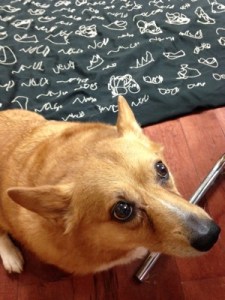

It’s all about choices, y’all. Choices and consequences. A pretty simple concept with pretty darn important repercussions. Too often we let somebody else make our choices for us and we are surprised or unhappy or cranky with the results. Or we go through every single day with a nasty, negative attitude and we wonder why we are so miserable. If these remarks resemble you, thunk yourself up side the head for me, will you? We learn a lot about ourselves from the choices we make and the consequences that ensue, and we learn a lot from life in general when we stew, thrive, or wrestle in life lived in the aforementioned consequences. Making our own choices, accepting responsibility and/or asking for help living the consequences, and making different choices when possible and necessary are the keys to living a self-determined life, and if you ask me, there’s no finer way to live.
Too often we take away the choices of others in the name of expediency or ease. Take dying people, for example. As life wanes, all too often opportunities to choose do, too. I’m not talking about drastic measures – that should already be spelled out in the living wills and such. I’m talking about things like what to eat and what to wear and what would you like to listen to now.

We spent today with Nancy, and we fiddled with cloth because I wanted to give her the option to do something besides draw. If you could see the video (I am, for the first time ever, traveling without my computer, and let me tell you: there’s a rather steep learning curve when blogging from the iPad, so alas, no video.) hear me in the background of the video asking Nancy what color cloth she wants to add next. (Though I don’t have to admit it here since you can’t see the video, I will nevertheless tell you that I am surprised and embarrassed and disappointed at the way I kinda’ rushed and overwhelmed by offering 3 color choices instead of waiting for her to process and decide, but that’s the value of video, and now that I’m aware, it won’t happen again.) She chose to fiddle with cloth; she chose which colors she wanted to add; and eventually she chose to pick up her crayons.

It was, as all days spent with Nancy are, fun, worthwhile, and thought-provoking. What say we make our own choices instead of abdicating our power, and what say we strive to gift others with the opportunity to make their own choices every chance we get. It’s a quality of life thing.







































Other Places to Find Us